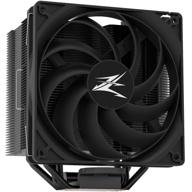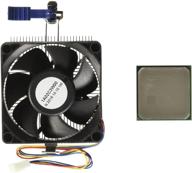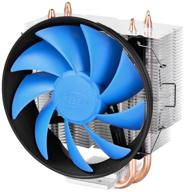
Review on 🔌 inShareplus 12V 30A 360W, DC Universal Regulated Switching Power Supply, Converter AC 100-240V to DC 12 Volt LED Driver, Transformer, Adapter for LED Strip Light, 3D Printing, Radio, Computer Project by Greg Bloom

Very well designed and high quality body and circuit parts
I bought 4 12V 240W DC power supplies for my LEGO room lighting project. Each of these $23 units replaces two (supposedly) 120-watt (10A) 12-volt DC power supplies that cost $20 each. While the $20 PSUs are admittedly much easier to set up/install, they proved utterly useless as they can't handle 72W (6A) of output power without flickering due to thermal overload protection. (Returned the junk and left a reasonable detailed 1-star review.) As for these marvels of modern production, I'm impressed. Although their installation is a bit more complicated. First, you must provide your own 120 (or 240) volt AC power cord. I used an old PC power cable that I cut to length, stripped the wires and soldered on the ring connectors. If you're using solid wire, you can just as easily insert the wire into the clamp and tighten the screw. Some of the nice features of these power supplies are: - There is a partition between each terminal screw to prevent short circuits. .- Easily accessible voltage adjustment screw for fine adjustment of the output signal. - Well-ventilated chassis design with closely spaced top and side vents. - High quality components inside. This power supply size does not come with its own cooling fan. My application required me to install it upside down between the joists on the ceiling. Therefore, the ventilation openings were mostly located under the device. Because heat tends to rise, normal air convection is not possible. Therefore, it only started to get very hot at partial load (understatement). So I bought (via Revain) "Noctua NF-A8 FLX, Premium Quiet Fan (3-Pin, 80mm)" for cooling. The fan itself is almost silent. However, when I applied it to the PS chassis, it was definitely audible. Although the case has many airflow holes, there was still plenty of metal (between the holes) to block airflow from the fan in direct contact with the case. So I decided to cut a roughly 3 inch hole in the top of the case just above the main heatsink. I knew this would void my warranty but figured it would be better to burn down the house while the PS was under its intended full load. (Burning the house down would no doubt piss my wife off.) Knowing that it's unwise to run anything at around 100% for long periods of time, I keep the maximum load below 200W (of the 240W available). When I removed the chassis cover to drill the hole I had a clear view of the internals. What I saw made the same strong impression on me as everything else in the design. I'm not an electrical engineer but I know some basic electronics and circuits. At this point I would have to look at the color codes for the resistor values, but I immediately recognized the *gold* "tolerance" ring on all resistors as opposed to silver or no silver. After cutting out the hole for the fan, I attached it. with 2 of the rubber connectors provided and use individual wires pulled from Cat5 to hold the other 2 corners. (I was only able to drill 2 holes in the case to match the fan holes.) I connected the (supplied with the fan) 3-pin to 4-pin adapter, then an old Y-hub power cable for Locate the PC's internal drive and cut it off to use as a connector between the PS and the fan. (See image.) Because in my lighting project the power supply is driving two light branches leaving the 3rd set of terminals open to run that 12v fan. Very comfortable. With the fan running now, the PSU barely feels warm at around 110W - until now. I expect it to get warmer when I eventually run it at 195W, but I think the fan should be able to keep up. If not, I'll just upgrade the fan. (Electronics 100 Review: Tolerance for gold is +/- 5% of marked value for transistors. Silver tolerance =/- 10% and none is +/- 20 percent.) Yes, you can get even tighter tolerance resistors. 5%, but I think that would be overkill for a simple power supply. However, the designers and production managers were clearly not using the cheapest parts, instead holding to a higher standard than usual. A fuse is soldered onto the circuit board with a clearly printed warning that only the same replacement fuse type may be used. It would be impractical to desolder/re-solder the fuse, unlike a snap-on fuse holder. However, a solder connection is better than a mechanical snap connection. Perhaps it was a conscious choice by a designer? The only problem is that the fuse type is not specified. I hope I never have to replace him. Yes, I am very satisfied with this product. I recommend this company's power supplies for any project where you need a reliable low voltage power supply. LEGO roboticist
- Fingers crossed
- Lots of stuff
New products
Comments (0)
Top products in 🧰 Computer Internal Components
Another interesting products
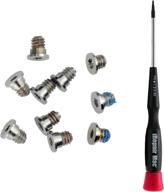
MacBook Retina 13-inch (A1425, A1502) and 🔩 15-inch (A1398) Bottom Case Screw Set with Pentalobe Screwdriver

11 Review
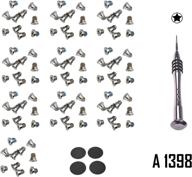
🔧 Premium Repair Replacement Screws & Tools for MacBook Pro Retina 15"/13" - Complete Bottom Case Set

10 Review

Comprehensive 500pcs Laptop Screw Kit Set for 🔩 IBM HP Dell Lenovo Samsung Sony Toshiba Gateway Acer

12 Review

🖥️ Helifouner 450-Piece Computer Standoffs Spacer Screws Kit: Ideal for Hard Drive, Motherboard, Fan, Power Graphics & Computer Cases

10 Review


